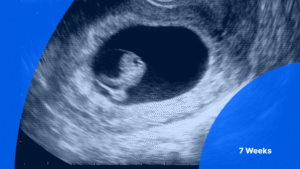Periodontal (Gum) Surgery_ Everything You Need to Know
Everything You Need to Know About Periodontal (Gum) Surgery
Reading Time: 13 Minutes
Overview of Periodontal Surgery: What You Need to Know
Periodontal (gum) surgery is an oral procedure used to address issues affecting the gums and bones in the mouth. It plays a crucial role in treating various stages of gum disease and can help repair damage, prevent tooth loss, and improve overall oral health. This surgery is often necessary for those with advanced gum disease and can even be done for aesthetic reasons. In this article, we’ll explore what periodontal surgery involves, the conditions it treats, and how to recover after the procedure.
Conditions Treated by Periodontal Surgery
Periodontal surgery is designed to address a variety of oral health problems, particularly gum disease. Here are the common conditions that it can treat:
-
Gingivitis: The earliest stage of gum disease, which causes inflammation.
-
Mild to Moderate Periodontitis: An infection of the gums that affects both the gums and bones supporting the teeth.
-
Severe Periodontitis: Advanced gum disease that can lead to significant tooth and bone loss.
These conditions often present with symptoms like:
-
Swollen, tender, or bleeding gums
-
Deep pockets between the teeth and gums
-
Receding gums
-
Tooth mobility or loss
-
Persistent bad breath
Gum disease can progress from mild irritation to a serious condition if left untreated. Periodontal surgery can help reverse the damage caused by these problems and preserve both your gums and teeth.
Types of Periodontal Surgery
Several types of periodontal surgery are performed, depending on the severity of the condition:
-
Flap Surgery: This involves making small incisions in the gums to lift the tissue and clean underneath, removing tartar and bacteria. The gums are then repositioned and stitched back to promote healing.
-
Bone Grafting: If the jawbone is affected by severe periodontal disease, bone grafting may be needed. It involves transplanting bone from another part of the body (or using synthetic bone material) to restore lost bone structure in the jaw.
-
Guided Tissue Regeneration (GTR): This technique involves opening the gums to clean out infection and placing a membrane between the gum and bone to promote bone growth and repair.
-
Tissue Grafting: In cases of gum recession, tissue from the roof of the mouth is used to repair lost gum tissue around the teeth.
Preparing for Periodontal Surgery
Before undergoing periodontal surgery, it’s important to follow specific instructions for a successful procedure and recovery. Here are some key preoperative tips:
-
Medication Check: Discuss any medications you’re taking with your doctor, as some may need to be adjusted before surgery.
-
Avoid Alcohol: Refrain from consuming alcohol at least 24 hours before the surgery.
-
Healthy Foods: Stock up on soft, nutritious foods like cottage cheese, yogurt, soup, and eggs to aid recovery.
-
Oral Hygiene: Maintain good oral hygiene before the surgery by brushing and flossing carefully. Your dentist may recommend using an electric toothbrush and a tongue scraper.
What to Expect During the Procedure
During periodontal surgery, the process may vary based on the extent of the treatment. Most procedures are done under local anesthesia, but sedation options are available to ensure comfort:
-
Local Anesthesia: Numbing agents are applied to the area, allowing you to remain awake but pain-free during the procedure.
-
IV Sedation: For a deeper level of sedation, medication is administered through an intravenous line to help you relax and reduce anxiety.
-
General Anesthesia: For more invasive procedures, general anesthesia may be used to ensure you remain unconscious throughout the surgery.
Recovery and Postoperative Care
After the surgery, a period of recovery is necessary to heal the treated areas. Here’s what to expect during the recovery process:
-
Week 1: Stick to soft foods, avoid brushing around the surgical site, and rinse your mouth with saltwater. Pain relievers can be used as needed.
-
Weeks 2-4: As healing progresses, the scabs will fall off naturally, and oral hygiene can be resumed with care. Attend follow-up appointments to monitor progress and ensure no complications.
-
Months 4 and Beyond: Continue with regular oral care and follow your dentist’s instructions for maintaining long-term gum health. You may be able to resume normal activities once fully recovered.
FAQs about Periodontal Surgery
-
What Conditions Does Periodontal Surgery Treat?
Periodontal surgery is most commonly used to treat gum disease at various stages, from gingivitis to advanced periodontitis. -
What Are the Benefits of Guided Tissue Regeneration (GTR)?
GTR helps encourage new bone growth and supports the tooth, improving the long-term health and stability of the teeth. -
What Happens During the Surgery?
The procedure generally involves cleaning the gums and bone, followed by using techniques like grafting or tissue regeneration to restore healthy gum tissue. -
How Can I Prevent Gum Disease?
Maintaining proper oral hygiene, including brushing twice daily with fluoride toothpaste, flossing regularly, and scheduling routine dental checkups, can help prevent gum disease.
Expert Tips
-
Dietary Considerations: For a smooth recovery, focus on soft, nutrient-rich foods during the first few weeks after surgery.
-
Keep Oral Health in Check: Consistent care can prevent the recurrence of gum disease and keep your smile healthy.
-
Stay Up to Date with Dental Visits: Regular dental exams and cleanings are essential for monitoring gum health and preventing complications.
Key Takeaways
Periodontal surgery can be a game-changer for individuals suffering from gum disease. By addressing the root causes of gum issues, the procedure not only improves oral health but also enhances overall well-being. Following proper preparation and aftercare ensures a smooth recovery, giving you a healthier smile in the long term.
For more tips and updates on oral health, join our community and stay informed about the latest dental procedures and recovery techniques!




